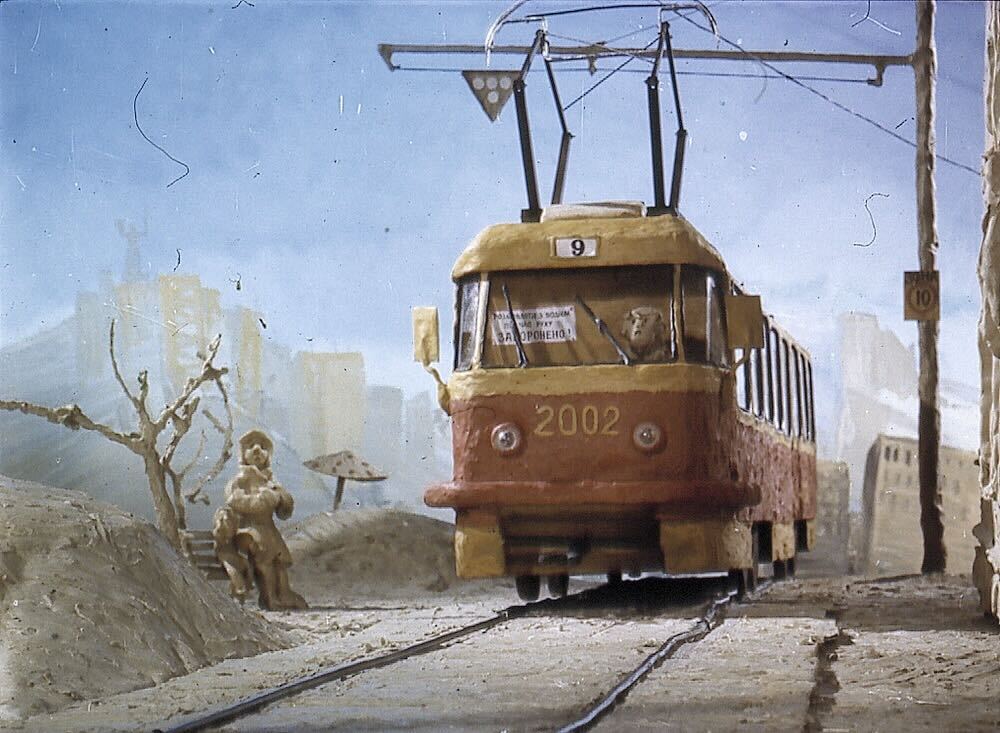When Russia attacked last year, everything Ukrainian suddenly became trendy. Animated films were no exception.
The earliest Ukrainian animated film, Vyacheslav Levandovsky’s 10-minute “The Fairy Tale of the Straw Bull” dates back to 1927. It was shot at the Odesa film studio. From then on, step by step, filmmakers have been experimenting and finding their own animation techniques.
- See the latest war in ukraine update in the Kyiv Post’s news bulletins released today.
- Obtain the most current Ukraine news articles released today.
JOIN US ON TELEGRAM
Follow our coverage of the war on the @Kyivpost_official.
In 1959, the Ukranimafilm film studio was founded and lasted until 2019. The creative team managed not only to continue the traditions of the first interwar Ukrainian cartoons, but also to create a number of original images that became emblematic of the Ukrainian animation school.
However, at that time Ukraine was part of the Soviet Union, so the work of directors was to a certain extent restricted by censorship. For example, those present at the time said that in one cartoon the blue and yellow balls were asked to be replaced with other colors.
“Animation development was not blocked entirely, but there was control,” Stepan Koval, one of the Ukraine’s best-known animators as well as the owner of the Novator studio, told Kyiv Post. “I think that the creators first needed to do something propagandistic, communist. That is, it was necessary to inspire confidence in the system in order to create something of your own later. But it was impossible to touch on general problems in the system.”

Scenery at the studio of Stepan Koval Novatorfilm
Since animation is one of the younger arts, the masters learned from their own experience. In 1983, the animated film Savushkin, Who Did Not Believe in Miracles achieved notoriety. It used a technique for the first time where the camera actually walks through space, creating unexpected angles. So from the 1970s to the beginning of the 1990s, a stylized approach to creating animated films was formed, which was very different from what the Disney studio used.
The first outstanding success was Alla Grachyova’s film The Bear and the One Who Lives in the River (1966). In 1967, the film won the Grand Prix “Golden Shoe” at the second International Children’s Film Festival in the Czech Republic.
“However, due to the collapse of the USSR, the archives of Kyivnaukfilm [a studio created in 1941 to produce popular science films] were completely destroyed. Because of officials of the Ministry of Culture, almost all the evidence that testified to the long-term work of many Ukrainian animators was lost. Backgrounds and sketches for already shot films, as well as future screenplays are all that remains of the Soviet legacy of Ukrainian animation,” Koval said.

“Zludni” (2005)
Since 1991, international animated film festivals, such as Krok, have been appearing in Ukraine. And the development of animation to a large extent began in the 2000s. A breath of “fresh air” for the animation industry in Ukraine was the international recognition of Stepan Koval’s film Tram Number Nine Was Running (2002), which in 2003 was awarded the Silver Bear in Berlin.
According to Koval, from then on the state began to allocate more funds for feature and animated films. National works began to be embodied in films. In 2013, with the support of the state agency of Ukraine for cinema, Ukranimafilm created the animated series Kotigoroshka based on the folk tale. In this film, the traditional Ukrainian school of animation is very present.
Koval himself is mostly known for his works made in the plasticine technique, representing the Ukrainian identity. Among his better-known works are Zludni (2005), based on the folk Hutsul fairy tale, the animated series My Country Is Ukraine (2010), each episode of which tells a famous or forgotten legend from a particular Ukrainian city or village.
Since the 2000s, Ukrainian artists have increasingly received awards at international festivals. Ukrainian cinema started losing its Soviet identity. Famous Ukrainian animators include Dmytro Lysenbard, Anatoly Lavrenishyn, Mykyta Lyskov, Julia Falileeva, Oksana Nesenenko and many others.
While potential cooperation with other countries is certainly there, Ukraine still lacks experience in producing and distributing films on the global film market.

“Tram Number Nine Was Running” (2002)
“At one of the festivals in Canada, I showed one episode from the project My Country Is Ukraine, 26 episodes of which were created over the course of about 10 years at our studio Novatorfilm. The producer said that the plot is really interesting; but there is a 10-year waiting list,” Koval said.
Nevertheless, Koval feels that Ukrainian animated cinema will gain new momentum after the victory, because there will be new heroes and problems that children will need to engage with. Even today, a new patriotic movie is being created, a cartoon about the dog Patron (the sappers’ dog).
But there are obstacles when it comes to financing. For example, there is a law that a portion of taxes must be allocated to film production, but it isn’t implemented. In reality, major entrepreneurs are not interested in giving part of their taxes to film production.

Episode from the cartoon “My Country is Ukraine” (2010)
"But in our conditions, when there are enough shortcomings of the system itself, the state has already partly financed the second Ukrainian full-length animated film ("Mavka. Forest Song"). And also at our studio I got finance for ten episodes of animation. However, due to the fact that full — fledged animated films are released rarely and slowly, there is not enough competition that would generate development," said the owner of the Novatorfilm studio.
You can also highlight the text and press Ctrl + Enter



